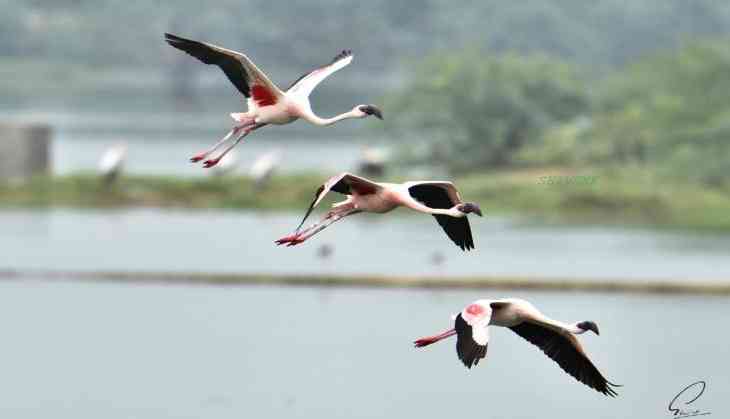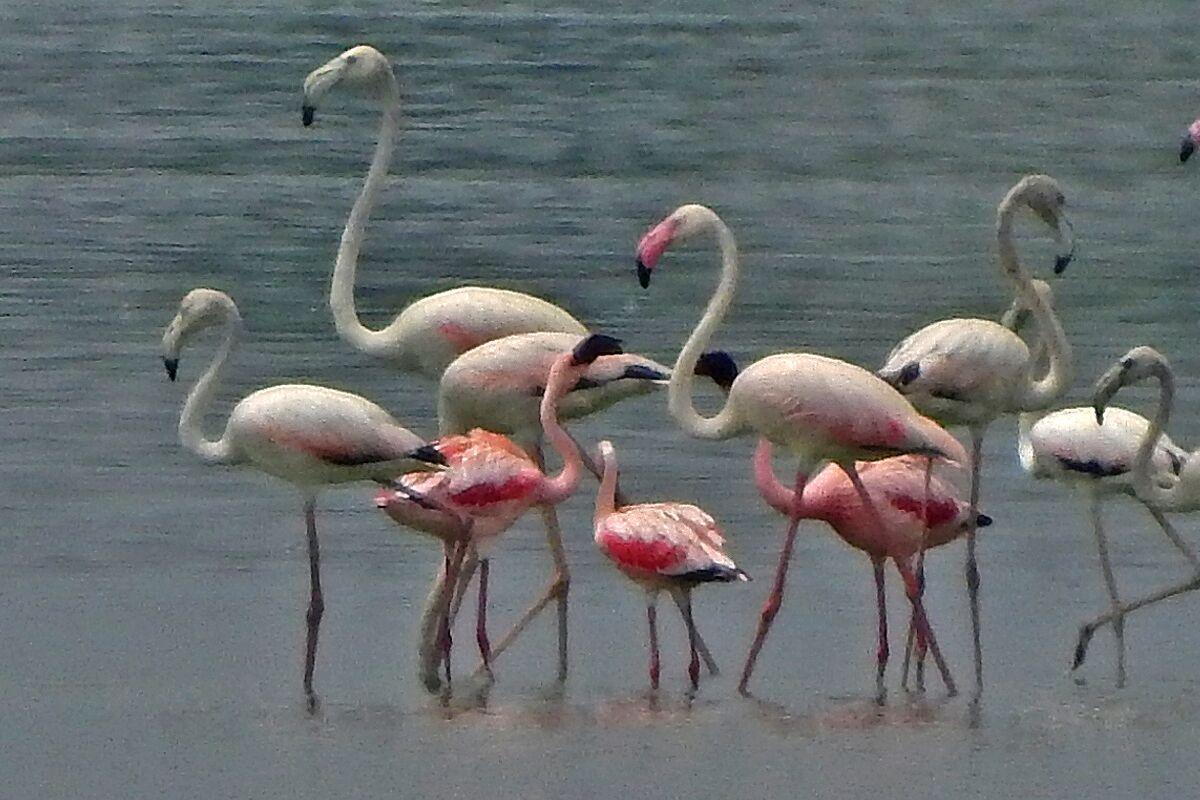Think Pink Think Flamingo

The water bodies in Chandlai and Barkhera, villages in the outskirts of Jaipur city on the Tonk road, had a surprise in store for the bird lovers. A small flock of Lesser flamingos was spotted there last week. Till now both the places, very ordinary farming villages before an enthusiastic band of nature photographers made them famous, had reported only Greater flamingos, a flamingo species taller than the Lesser flamingos.
It was a pink surprise for Lesser flamingos (Phoeniconaias minor) are pinker in colour while the Greater flamingos’ plumage tends to be more white than pink. Lesser flamingos also have long necks, long legs and bent bill. The Greater is taller and have light pink beaks with a dark tip. But then, when it comes to the flamingos pink is the colour which comes to mind.
“I saw a three-some the last Sunday. This was the first time I could Lesser flamingos in the area,” an excited nature photographer Raj Kumar Chauhan said. “I was with another nature photographer Shiv Kaul when I spotted them. We went there the next day to but could not find them,” he informed.
In fact the birds of Chandlai and Barkhera, situated some 30 kms from Jaipur, are new introduction to tourists visiting the Pink City. They are purely the invention of nature lovers—to be specific, photographers who are into wildlife photography. If the tourists visiting the Pink City would take a detour on Tonk road in future in search of birds that won’t be the contribution of the State tourism authorities or the Forest Department but the nature loving photographers.

By now Greater flamingos (Phoenicopterus ruber) have made Chandlai and Barkhera part of their annual sojourn during the rains and in the winter. “The Greater flamingos come every year in big flocks. At present there are 1200-1500 of them in Chandlai,” Chauhan reported. The bird experts say that flamingos like to feed on Spirulina or the blue green algae (BGA) found in the water here.
It is interesting to note that Chandlai and Barkhera are not yet in the reckoning for IBAs (Important bird areas) in India. However the nearby Sambhar Lake, which is a Ramsar site too, has reputation of hosting thousands of flamingos every year. However, flamingos do not breed there too. Their breeding place, as many of you would know, is Rann of Kutch in Gujarat where they make cone-shaped nests on mud and lay eggs. Sub-adults are whitish and they acquire pink feathers with age.
Flamingos are waders and there are six species of them spread over in the Americas and the rest of the globe. The birds are gregarious in nature and they are found in thousands together in many of the water bodies. Till 1994 their status was of Lower Risk in the IUCN(International Union of Conservation of Nature) Red Data list but the recent assessments(2015 and2016) they have been brought under the NT(nearly Threatened) category.
BY NEWSBEE
First published: 25 August 2018, 16:39 IST
